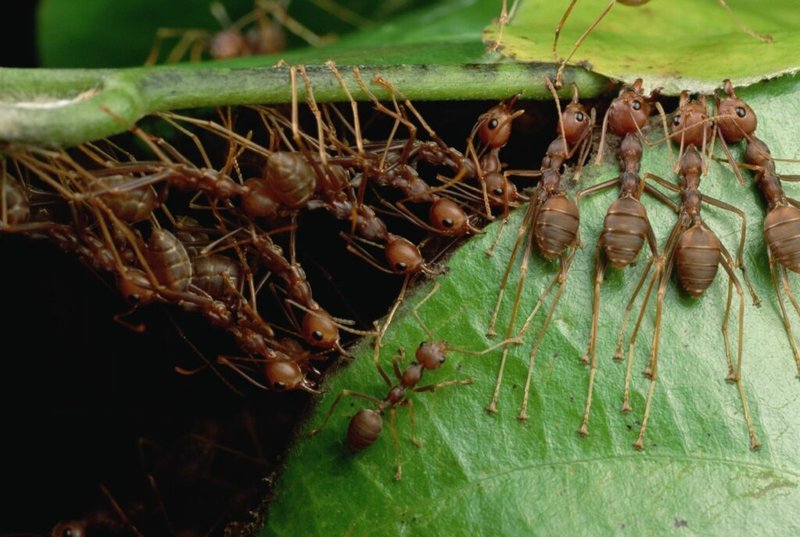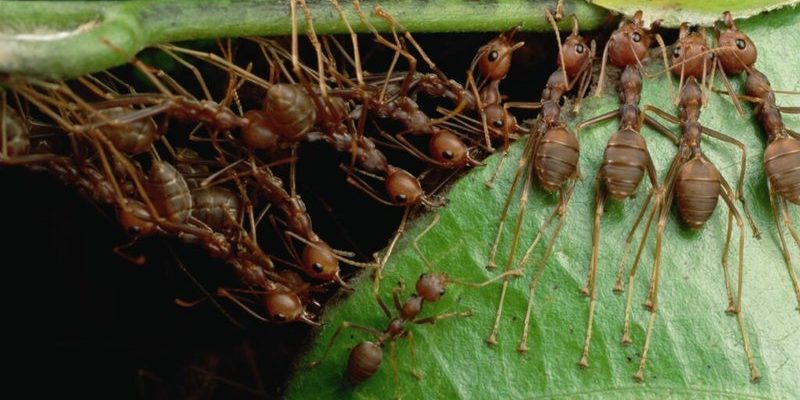
Ants are found almost everywhere on the planet, except in extreme conditions like the polar ice caps and deep oceans. They build complex communities, or colonies, that can vary in size from just a few dozen individuals to millions. Just like how humans have various types of homes—like apartments, houses, or tents—ants have a variety of nests that serve their unique needs. Whether it’s a simple mound of dirt or an intricate underground labyrinth, their homes are fine-tuned to their specific environments and lifestyles.
Common Ant Habitats
Ants are exceptionally versatile when it comes to choosing where to live. You can find them in forests, deserts, grasslands, and even urban areas. Let’s explore some of the most common habitats where ants thrive:
- Forests: In dense forests, ants find plenty of food sources and shelter among the trees. They often build their nests in rotting wood or leaf litter, which helps keep them moist and protected from predators.
- Deserts: Surprisingly, some ants are masters of the desert! They create nests beneath the sand to escape the scorching sun and rely on their ability to store water. Desert ants often forage at cooler times of the day to avoid the heat.
- Urban Areas: As humans expand their living spaces, ants have adapted to urban settings. They can be found in gardens, parks, and even inside homes, where they search for food scraps.
- Grasslands: In open fields, ants dig deep into the soil to create extensive tunnel systems. These nests are well-ventilated, which helps regulate their temperature.
Each habitat presents unique challenges, and ants have developed strategies to overcome them.
Building Their Homes: Ant Nest Types
Ant nests come in various shapes and sizes, each designed to suit the ants’ environment. Here are some of the most common types of nests you might encounter:
- Underground Nests: Many ants dig deep tunnels below the surface. These nests offer protection from extreme weather conditions. The complexity varies significantly, with some having chambers for nurseries, food storage, and sleeping areas.
- Wood Nests: Certain species, like carpenter ants, excavate wood to create their nests. They prefer damp or decaying wood as it’s easier to carve out and provides them a safe place to raise their young.
- Leaf Nests: Some ants, like leafcutter ants, create nests using leaves they cut and carry. They even cultivate fungus within these nests for food!
- Mound Nests: Ants such as fire ants build mounds above ground, often made of soil and plant materials. These mounds help to regulate temperature and moisture levels within the nest.
The diversity of nest types showcases ants’ amazing ability to tailor their homes to their specific surroundings and needs.
Adaptations to Climate
Ants are incredible at adjusting to different climates, which is key to their success as a species. Here’s how they manage to adapt:
- Temperature Regulation: In hot climates, ants often dig deep into the ground where it’s cooler. Some even create shade over their nests using plant materials to maintain a moderate temperature.
- Moisture Control: For ants living in dry areas, they might build nests that retain moisture or are located near sources of water. Others have developed social behaviors to help gather water efficiently.
- Seasonal Changes: In colder climates, many ants enter a state of dormancy, similar to hibernation. They lower their activity during winter, relying on stored food and the insulation of their nests.
These adaptations show just how resourceful ants can be, ensuring their survival in a variety of conditions.
How Ants Communicate and Collaborate
Communication is vital for ants, especially when it comes to building and maintaining their nests. They use a sophisticated system of pheromones, which are chemical signals that ants release to convey messages. Here’s how it works:
- Foraging: When an ant finds food, it secretes a pheromone trail back to the nest, allowing other ants to follow the path. It’s like leaving breadcrumbs that lead to a feast!
- Alarm Signals: If threats arise, ants release alarm pheromones to alert others. This quick communication helps the colony react to dangers, like predators or intruders.
- Cooperative Building: Ants work together to build and maintain their nests. They communicate through touch and pheromones to coordinate activities, ensuring a strong and efficient structure.
This teamwork is crucial for their survival and success, showcasing their ability to adapt socially within their environments.
Why Ants Matter to Ecosystems
You might be wondering why we should care about where ants live and how they adapt. The truth is, ants play a critical role in ecosystems. Here’s why they matter:
- Soil Aeration: As ants dig their nests, they help aerate the soil, promoting water absorption and nutrient cycles, which benefits plants.
- Decomposers: Ants are excellent recyclers. They break down organic material, helping to decompose leaves and other matter, contributing to nutrient cycling.
- Food Source: Ants serve as a food source for many animals, including birds, mammals, and reptiles. Their presence supports biodiversity.
By understanding their adaptations and habitats, we can better appreciate the important roles ants play in our world.
Ants truly are remarkable creatures. From their diverse habitats to their impressive adaptability, they’ve shown us how resilience and teamwork can lead to success. They live in an array of environments, building unique nests tailored to their needs, and communicate effectively with one another to thrive. So next time you see a line of ants marching confidently along, remember the incredible journey they make and the vital role they play in our ecosystems. Each one is a tiny testament to the power of adaptation and survival in a world that constantly changes.

